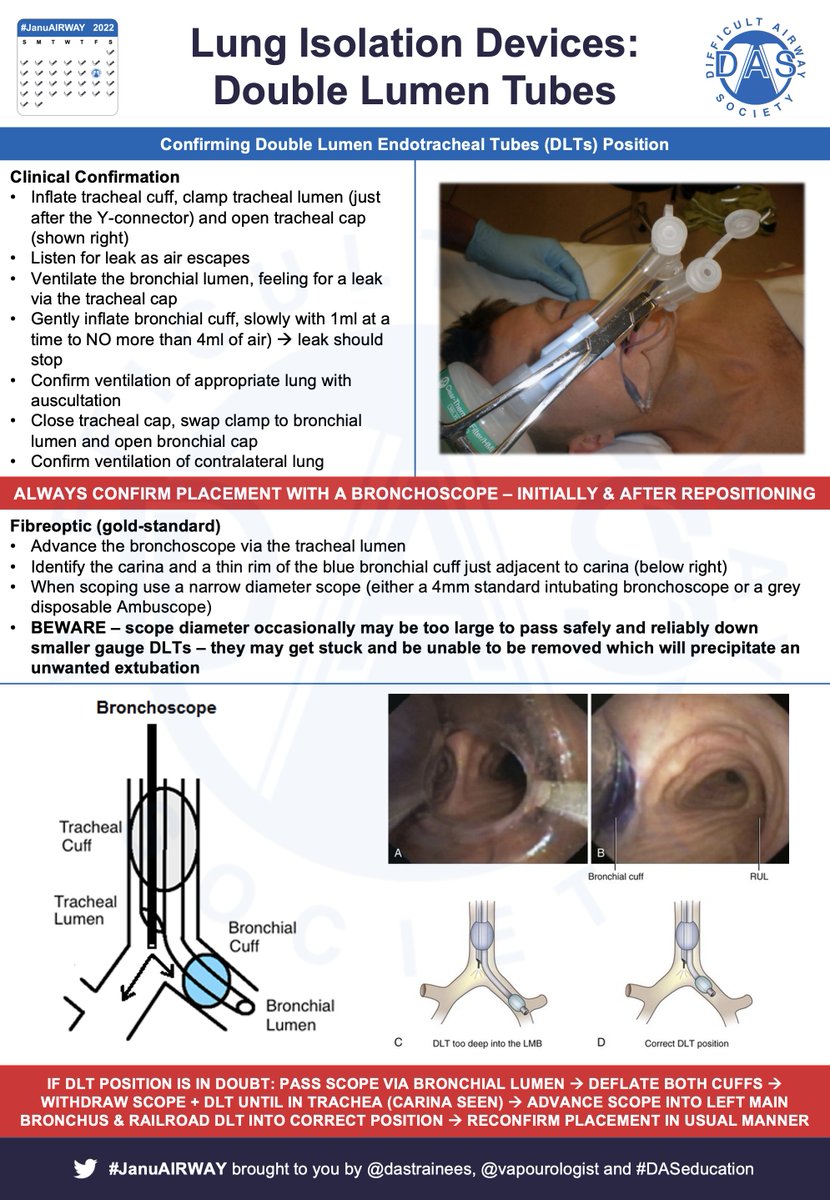
#JanuAIRWAY Day 13. Jet Ventilation – this is a bit more niche in anaesthesia / airway management, but fascinating. Here’s a #OnePager covering the basics. Let’s dive in…
#JanuAIRWAY 1/8
#JanuAIRWAY 1/8

2 modes of jet ventilation – low frequency (<60 jets/min) & high frequency (>60). Frequency determines device. 2 commonly used devices – Manujet (modified hand operated Sanders injector) or Monsoon (specialised jet ventilator). Here’s a some #OnePagers
#JanuAIRWAY 2/8


#JanuAIRWAY 2/8



Several different potential mechanisms to apnoic oxygenation during HFJV, including:
-Bulk flow
-Laminar flow
-Taylor dispersion
-Pendelluft
-Molecular diffusion
-Cardiogenic mixing
derangedphysiology.com has a great article & this diagram #FOAMed
#JanuAIRWAY 3/8
-Bulk flow
-Laminar flow
-Taylor dispersion
-Pendelluft
-Molecular diffusion
-Cardiogenic mixing
derangedphysiology.com has a great article & this diagram #FOAMed
#JanuAIRWAY 3/8

Key clinical pearl - the critical airway diameter for exhalation. Dworkin et al (sciencedirect.com/science/articl…) showed jetting across a Glottis <4.0-4.5mm in diameter leads to gas trapping, independent of jet ventilator settings. There MUST be a path for exhalation!
#JanuAIRWAY 4/8
#JanuAIRWAY 4/8

3 routes:
- Supraglottic - attached to a surgical laryngoscope
- Transglottic - using a jet ventilation catheter
- Transtracheal - using a cannula via the cricothyroid membrane
Here's some #OnePagers on surgical laryngoscopes and jet ventilation catheters
#JanuAIRWAY 5/8


- Supraglottic - attached to a surgical laryngoscope
- Transglottic - using a jet ventilation catheter
- Transtracheal - using a cannula via the cricothyroid membrane
Here's some #OnePagers on surgical laryngoscopes and jet ventilation catheters
#JanuAIRWAY 5/8



Here are some papers / links that you might find interesting:
🔗academic.oup.com/bjaed/article/…
🔗
🔗
🔗ncbi.nlm.nih.gov/pmc/articles/P…
If you have any others of interest, tweet them to us for inclusion next time!
#JanuAIRWAY 6/8
🔗academic.oup.com/bjaed/article/…
🔗
🔗
🔗ncbi.nlm.nih.gov/pmc/articles/P…
If you have any others of interest, tweet them to us for inclusion next time!
#JanuAIRWAY 6/8
Increasingly jet ventilation is being used outside of ENT, in interventional radiology and cardiac cath labs to improve image quality. In these environments, the following set-up has been used to ensure airway protection, whilst allowing jet ventilation.
#JanuAIRWAY 7/8
#JanuAIRWAY 7/8

Hope that helps. Tomorrow we'll take a look into at One Lung Ventilation. See you then! #JanuAIRWAY 8/8
*Disclaimer: Inclusion of content (equipment, techniques and scoring systems etc.) in #JanuAIRWAY does not constitute DAS endorsement
*Disclaimer: Inclusion of content (equipment, techniques and scoring systems etc.) in #JanuAIRWAY does not constitute DAS endorsement
• • •
Missing some Tweet in this thread? You can try to
force a refresh






















